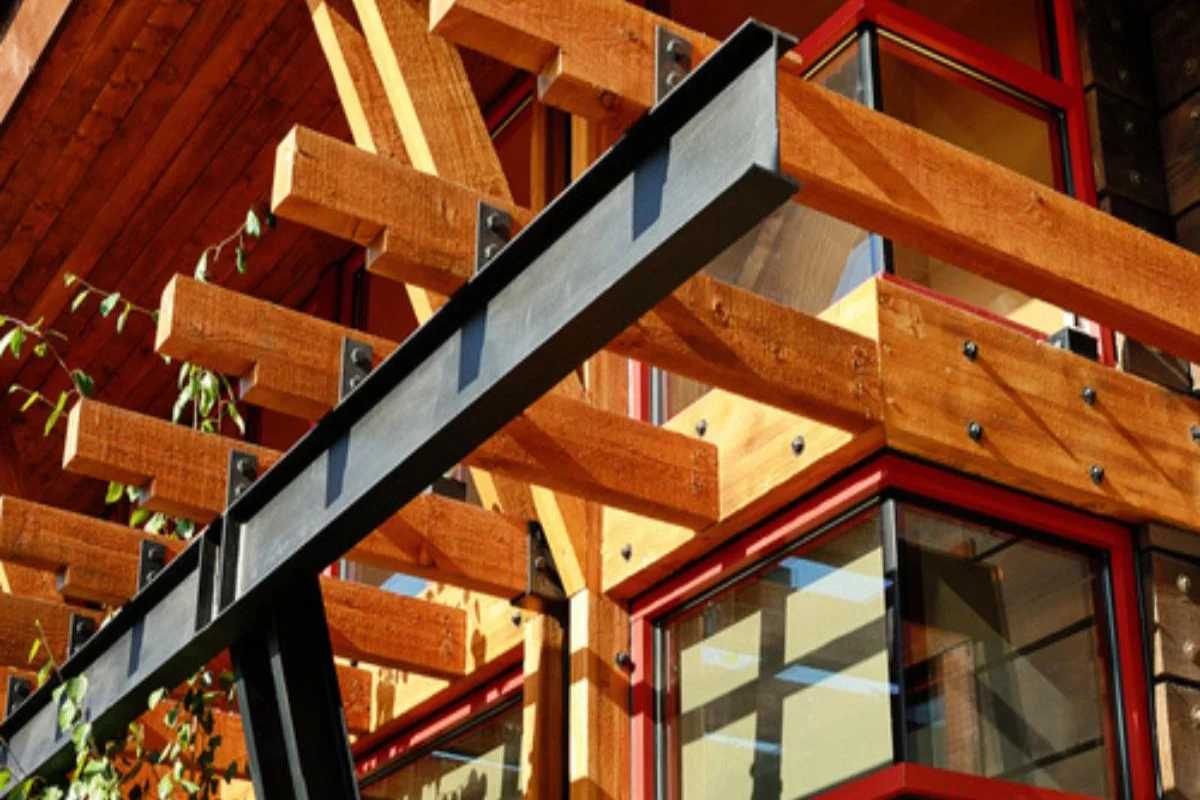
Plank and Beam
Introduction
The essentials of plank and beam framing differ from that of the rafters, joists, and stud framing, where the pieces of wood are comparatively larger and farther apart. The planks are at least more than 2 inches thick. Wall planks, ceilings, and subfloors remain positioned on beams where the distance is 8 feet. These beams are placed preferably either on piers or posts at the ends. Other framing is incorporated into the wall space between the posts so that internal and exterior treatment can remain implemented. This framing provides bracing.
For instance, an exposed plank and beam ceiling have various methods by which the massive planks can remain joined. Some of these types of flooring are tongue and groove, grooved plank with splined insert molding, grooved plank with exposed spline, grooved plank with spline and V-joint, and rabbeted plank with batten insert.
Advantages of Plank and Beam
The following are the advantages of plank and beam framing:
- Ceilings can receive minimal treatment, such as tremendous expenses.
- It is perhaps one of the ways roof planks are flexible since they can remain used to form the structure’s ceiling, thereby earning the structure more height at no extra cost.
- It has fewer and larger pieces than the conventional framing, which means less labor, which is also a significant saver.
- There is no need for cross-bridging of joists when counting the studs or pillars in a structure.
- The nails are more extensive, and the frequency of their use in construction is smaller than that of screws.
Limitations of Plank and Beam Framing
- As a rule, plant flooring remains used to distribute loads even at a lesser pressure. Concentrated loads include those placed on load-bearing partitions, large appliances, toilets, and bathtubs. More framing might remain needed.
- Perhaps applying insulation under planking becomes a challenge in terms of aesthetics. If insulating remains done over the planks, the kind of insulation must be rigid as it can remain easily compressed when a heavy load remains placed on it.
- Perhaps the lack of concealed areas in the ceilings may be a disadvantage when it comes to the location of the electrical systems.
Brief Glossary of Plank, Beam and Timber Framing
Beam
A beam is a horizontal wooden member of a large cross-section used primarily as a structural element or for supporting a floor or a roof. They also take up vertical loads, such as the structure’s weight, besides bearing horizontal loads. Beams act as the columns that take loads of ceilings, roofs, and floors and transfer these loads to vertical load-bearing members.
Plank
Plank and beam construction involves a vast, thick, heavy timber plank. They enable beams to remain placed farther from each other.
Post
This element in post and beam construction is a long piece of timber that is used in setting vertically and on which a beam rests.
Timber Frame
Timber frame construction is different from post and beam construction, which calls for using steel clips and plates to connect timber members; the timber frame construction employs mortices, lugs, tenons, hardwood dowels, and rarely steel. It is the advanced method of timber framing and is also known as the carpenter’s method. Timber framing can remain described as the next step to plank & beam houses or post & beam houses.
Conclusion
With these extra ideas and tools, plank and beam structure investigation is broader. Cosmetic, mechanical, and systemic advantages make many projects. Understanding the essence of this method and the context that will allow professionals to unleash its potential is crucial. Thus, knowledge and connections will prove to be valuable assets for companies operating in the constantly developing plank and beam construction industry in the future.